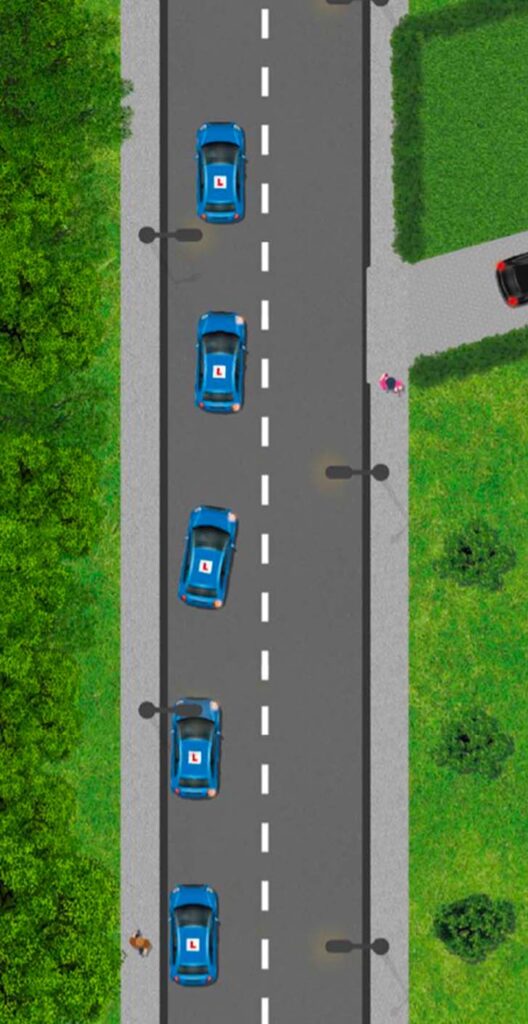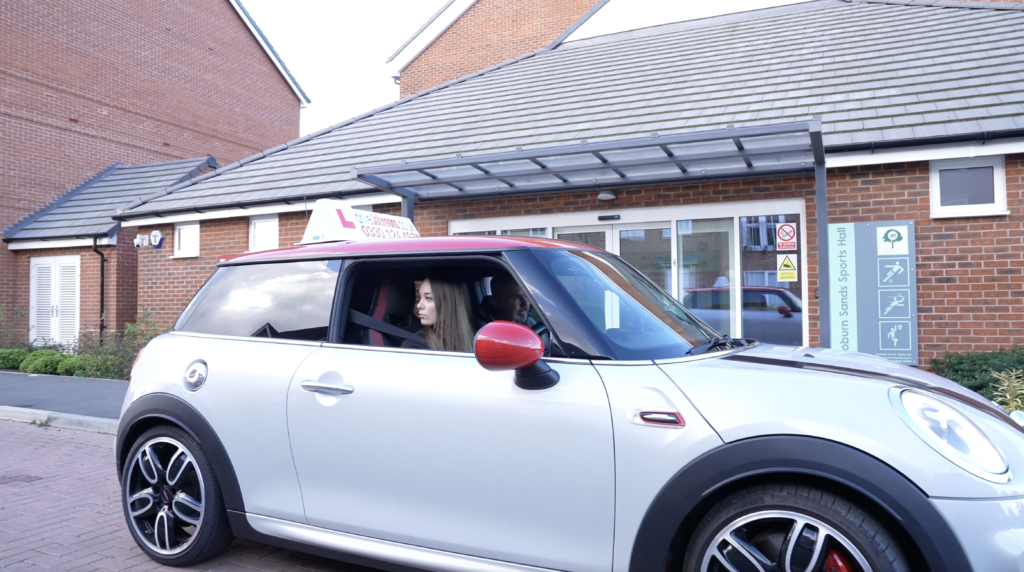Objectives: You should be able to prepare the vehicle from a parked position from the side of the road. You should be able to make effective observations, applying the mirror-signal-manoeuvre routine. You should be able to move away under control and take up a safe position in the road.
Moving off from the side of the road
Clutch down fully and into 1st gear, occasionally 2nd if on a steep downwards hill.
Apply the gas, usually about the thickness of a £1 coin, so that the engine begins to rev slightly. If you have a rev counter, use this to help you. Press the gas enough so that it’s just over 1 to 1 and a 1/2 on the rev counter for most cars.
Now bring the clutch up slowly to its biting point: this is the point when you will feel a slight tug at the front of the bonnet of your car.
At this point, hold your left foot still and keep you right foot on the gas slightly too.
You have now prepared the car to pull away. The car wants to move off, but you still have your handbrake on which will be locking the two back wheels.
Observe and Manoeuvre
Once you have looked over your right shoulder and you are sure it’s safe to move off, you will need to release your handbrake.
Once you have released your handbrake, you will need to gradually increase your gas, whilst gradually bringing the clutch up slowly. It is important that you co-ordinate these two pedals together.
As the car begins to move forwards, you will need to pull the steering wheel slightly right to come away from the kerb. Ask your instructor for a focal point when you are driving so that you can position your vehicle a good distance from the kerb. Alternatively, glance in both of your door mirrors and the gap on both sides of your vehicle (kerb and white lines) should appear equal.
Remember to cancel your signal if it’s still on, as other road users might find it misleading.
Tips
Stalling: This is usually a clutch control issue. Are you in a petrol or diesel car? If petrol, you will require enough gas so that you can hear the car revving before finding your biting point. If you try to find the biting point first without gas, there is a higher risk you may stall.
The gas should always be set first; however, in a diesel it is usually easier and more forgiving to move away if you have forgotten to set the gas.
Just as the car begins to move, pupils often release the clutch up quickly and fully. This could be another reason why you are stalling.
Try this: Just as the car begins to move, ease the clutch up over the course of 3 seconds. Count to 3 in your head. As you gradually bring the clutch up, don’t forget to gradually increase the gas. You should be co-ordinating the two pedals at the same time.
Top Test Tips
In cities such as London, your examiner may ask you to pull up on the left or even pull up on the right in busy areas. When you go to move away again from the side of the road, be sure to join the traffic smoothly and quickly, making sure you don’t slow vehicles down behind you. If you force other vehicles to slow down, you will be marked down on your test and, in many instances, this can be a serious/dangerous fault.
To move away quickly, use first and second gear longer than you normally would. Taking your test or driving lessons in Ilford will require this in many areas. You may need to ignore the green gear change symbol telling you to up a gear for fuel economy purposes.








